Wild rice is a source of cultural pride in Minnesota where I'm from. Unfortunately, there's a lot of misinformation about it online and in print. It's time I had a guide on here about one of the most important ingredient of my region, so, I'm going to try and answer all the questions I can about it.
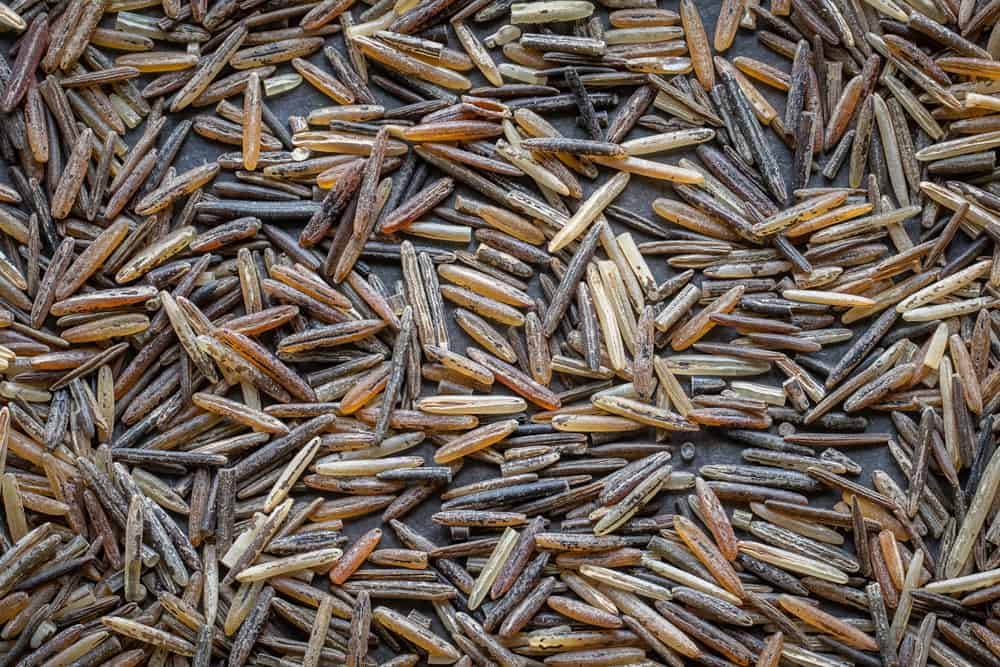
And there's lots of questions: Is it actually wild? Which wild rice is the best to buy? Is there a difference between expensive hand-harvested wild rice and cultivated? What about parched, cultivated wild rice? Gas parched? Lake rice? River rice? How much water do you add?
All the terms and info are confusing. My goal here is to help you understand the differences between various types of wild rice, and to dispel as many culinary myths about it in the process as possible.
Harvesting your own wild rice
This post has nothing to do with harvesting your own wild rice. I still haven't been ricing myself. If you're interested in learning about harvesting your own I recommend Sam Thayer's first book: The Foragers Harvest.
All I'm going to talk about here is purchasing, sourcing, cooking and navigating how you can get the best wild rice for your professional or home kitchen.
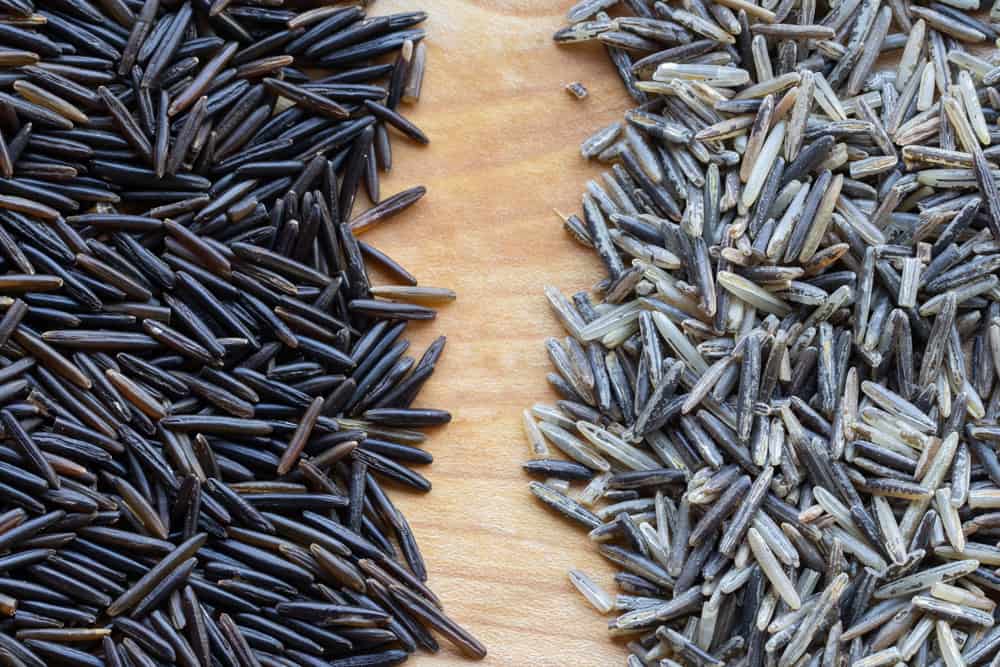
The two types of wild rice
This is the biggest thing to know, and by far the most confusing, so be patient and stay with me here. If you go to the store, more than likely, you'll see bags of black, shiny wild rice for sale. If you go online, and search for wild rice, things get more complicated.
There's hand harvested wood parched wild rice, black wild rice, air-boat harvested gas-parched lake rice, cultivated wood-parched wild rice, and regular cultivated wild rice. Oh, and there's also fancy, roll cut, soup grade, quick-cooking, rice in a can (no, just no) and on and on.
So, which wild rice to buy? Which one's real? Before we choose, it's important to understand the differences between the two types of rice.
Blackened wild rice
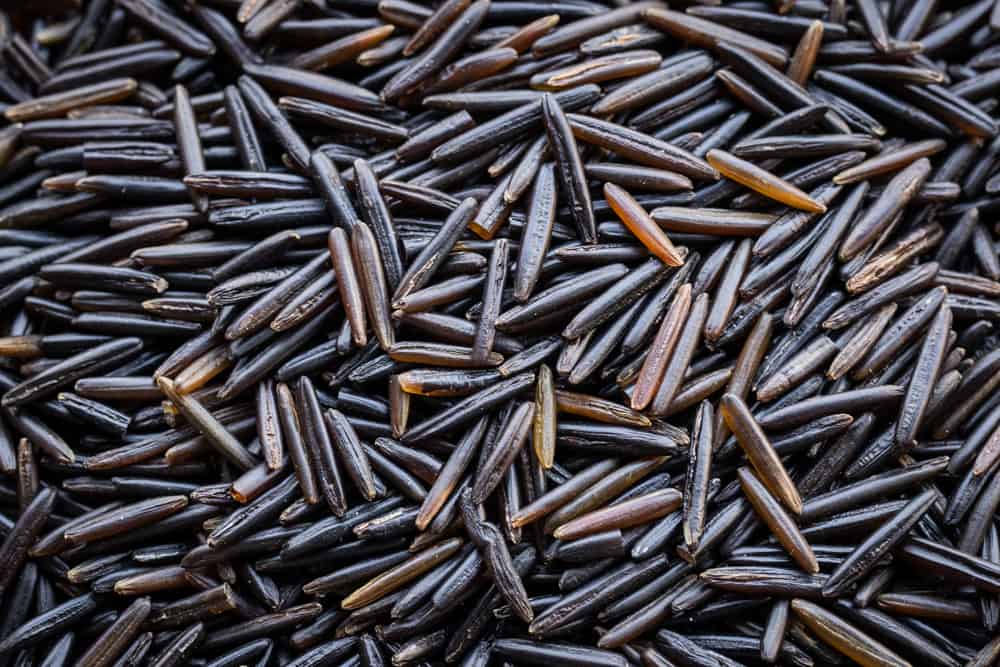
Why is wild rice black? The black wild rice (often called cultivated, commodity, or black paddy rice) you commonly see in stores is from the same plant (Zizania aquatica) that will produce the other more expensive wild rice, the difference comes in how the wild rice is processed.
After commodity wild rice is harvested, it is left wet for a few days, and that is the most crucial part of the process.
As the rice sits, a sort of transformation occurs where the rice hardens it's seed coat (I can only assume to make the seed viable for long periods of time) called the "blackening process".
The rice hardens it's seed coat, turning it black, and in the process there's some fermentation that alters the flavor a bit (more on that later).
Natural, Hand-Harvested Wild Rice, Manoomin or Lake Rice
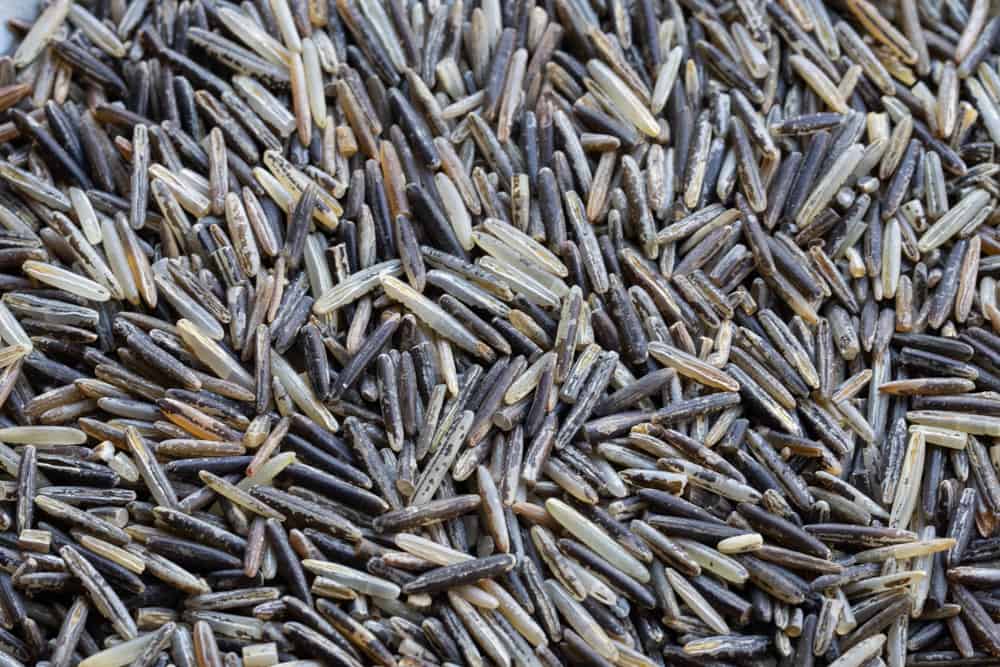
By contrast, the other wild rice (which could go by any of the above names) isn't left wet, it's dried, then parched by toasting over a fire. Traditionally the heat source was a wood fire (wood-parched) but gas parching has become common and has a similar effect on the rice, but a slightly less interesting flavor.
The heating and toasting halts any blackening, gives a toasty, sometimes smoky taste to the rice in the case of wood parching, especially if it's done using traditional methods..
Wild rice processed in this way will have an uneven color, with the grains being different shades of tan, golden and brown. It is visibly different from the shiny black stuff.
Most of the expensive wild rice you purchase will be that, and it's good. It is a completely different product compared to blackened wild rice, or paddy rice, as it's often called.
Another name for hand-harvested, parched wild rice is Manoomin, the Anishinabe name. Confusingly, cultivated black rice is parched too, but this should happen after the blacking process.
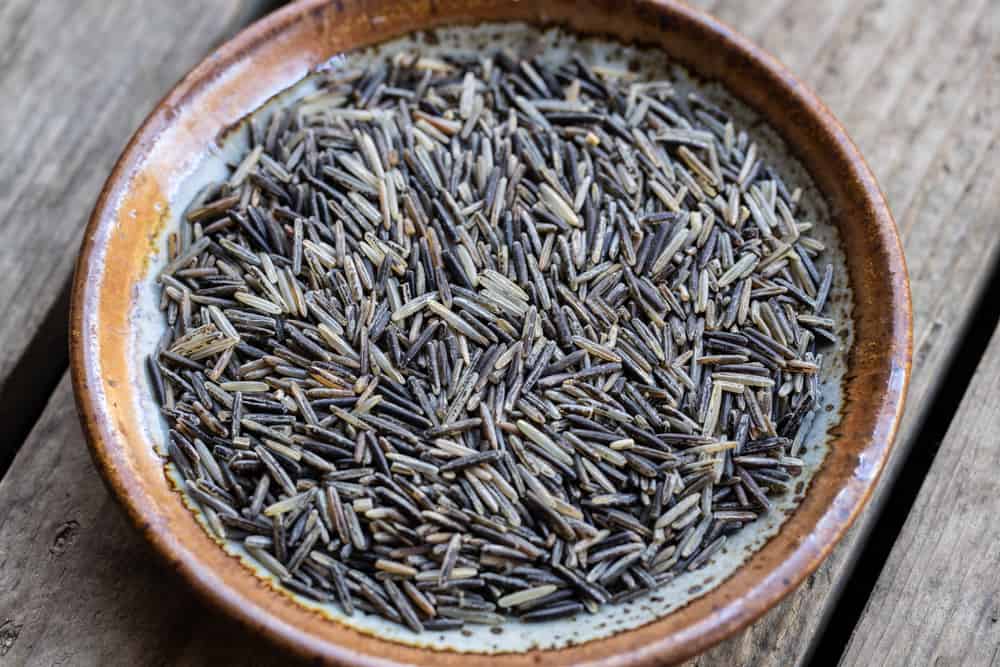
Purchasing Wild Rice
In other countries like Italy, special food products like wild rice are regulated for their quality and processes. In the United States, we don't have any systems like that, so it's really up to the buyer to do their homework when figuring out which wild rice to by.
All of this makes the simple question of where to buy wild rice a confusing one. I'm lucky, because there's lots of good wild rice for sale near me, but, depending on where you live, you might not be so lucky, so I'm including a few pieces of advice I think are really helpful here.
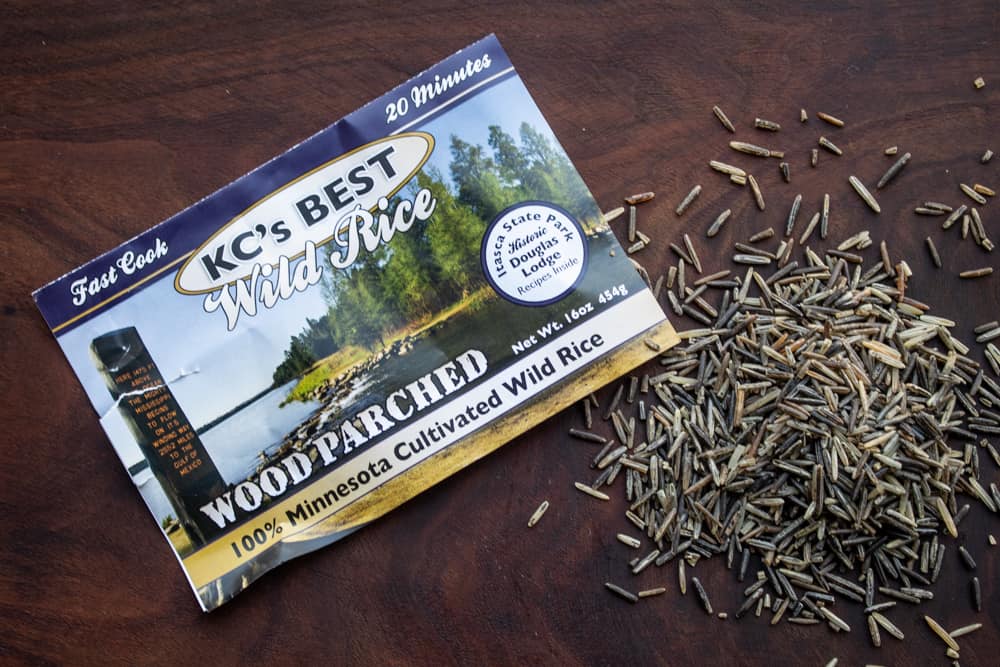
How much does wild rice cost?
The good stuff is expensive, typically double what the black wild rice will sell for. When in doubt, buy the expensive stuff. Expect to pay anywhere from 12$-20$ a pound. Confusingly, some cultivated rice can be sold for nearly as much as the low end of the spectrum here.
Inspect the rice
You can usually see the differences between types of wild rice easily just by looking at them. Black paddy wild rice is jet black and shiny, while hand-harvested manoomin will have grains of uneven color, with a matte finish.
For the sake of mentioning it, black rice, or forbidden rice, is not even close to the same product here, and is more closely related to rice like brown and white rice.
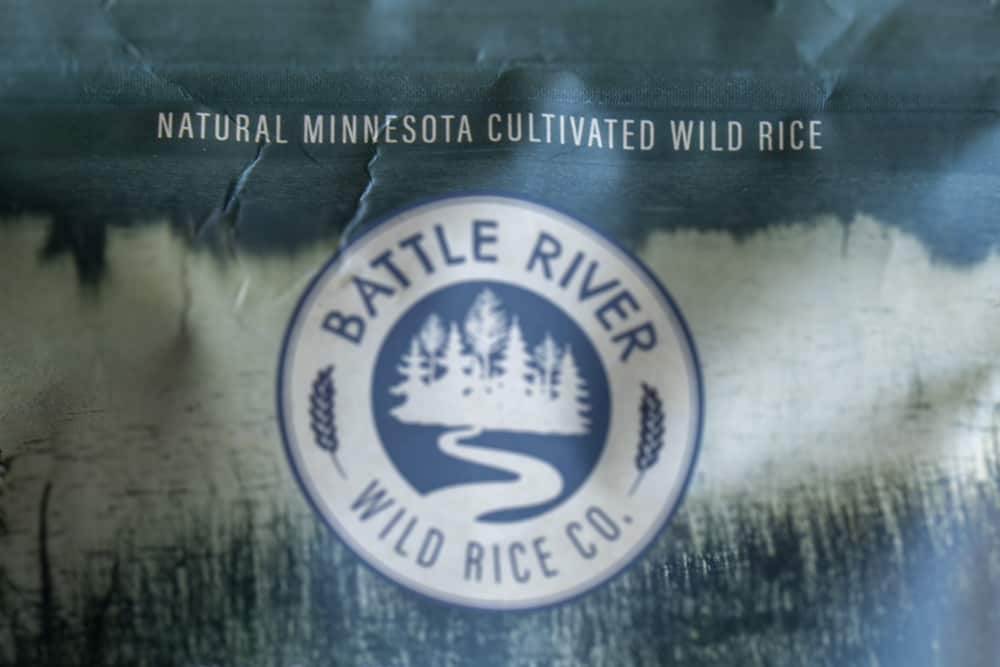
Wild Rice Names
Really good wild rice masquerades under a number of different names, but a few good terms to keep your eye open for are:
- Hand-harvested
- Wood parched
- Lake rice or river rice
- Manoomin
All of these terms will generally mean that your wild rice has not undergone the blacking process. By comparison, black wild rice will usually be labeled as cultivated, farmed, black etc.
Soup grade
Exactly what it sounds like. Soup grade wild rice is broken, cut, or in pieces so it can be added directly to soup while it cooks. As the cut grains differ in size, they'll also absorb water at a different rate. This is not for cooking on the stove top like typical wild rice, it will be mushy.
Long Grain
Natural, long grains of wild rice. If the rice is blackened wild rice, it can take an hour to cook. Basically this indicates high-end wild rice that doesn't have broken particles in it that can absorb water at different rates.
Roll cut
Roll cut, at least to me, is basically the same thing as quick cooking. The rice is cut using a machine to cut down on the cooking time. It's best for soup, stuffing, or bread and will cook up mushy on the stove top.
Quick-cooking
Quick cooking is complicated. Confusingly, good, high quality wild rice is sometimes labeled as "quick cook" wild rice, like this example. Then you have others labeled quick cook that are obviously blackened rice, like this. So, when in doubt, use the price, visual, and terminology examples I've mentioned here, and you should be able to sniff out the real McCoy.
Where to Buy Wild Rice
Here's a few of my favorite sellers. When in doubt, purchase the most expensive type a supplier offers. These have been fluctuating, if you know good sources, please comment so I can keep it up to date.
- Great Lakes Wild Rice (My first choice)
- KC's Best (Budget friendly if you buy in bulk.)
- Foragers Harvest (Extra high quality, seasonal, sells out fast)
- Moose Lake Wild Rice
- TNT Wild Rice (WI)
- Moose Lake Wild Rice
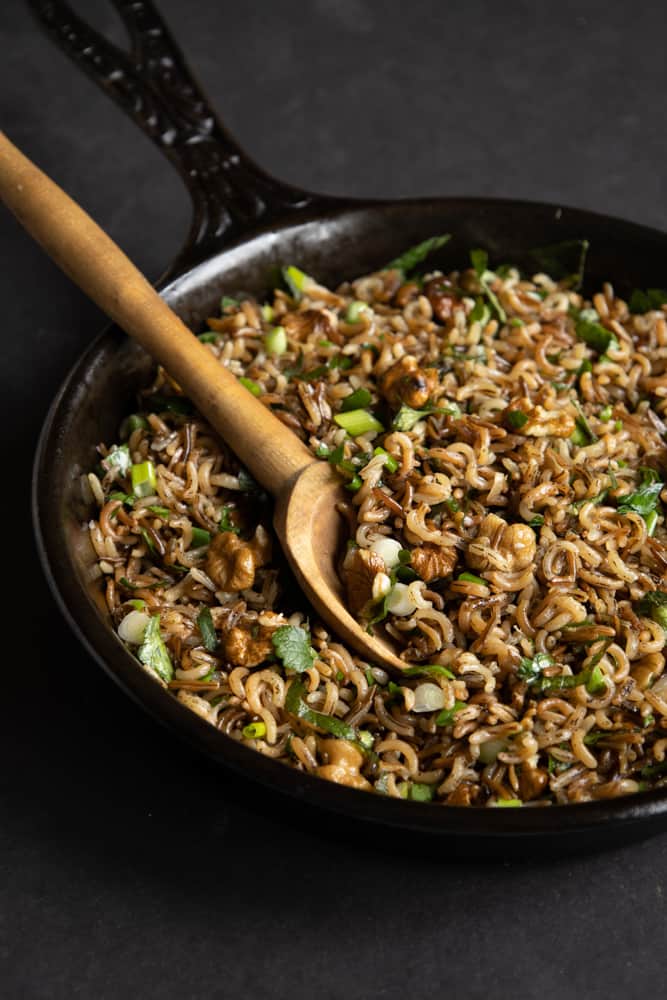
How to Cook Wild Rice
Cooking gets confusing depending on who you ask, and what type of wild rice you're cooking. For example, the water to wild rice ratio can vary drastically depending on who is telling you how to cook it.
One company I know of recommends boiling all their rice, lake rice, parched rice, or black paddy rice in the same ratio of water (nearly 1:6) which is crazy talk, and wasteful since you'll inevitably end up pouring some of the cooking liquid down the drain (on a side note, the cooking liquid is delicious and I used to catch my line cooks drinking it!).
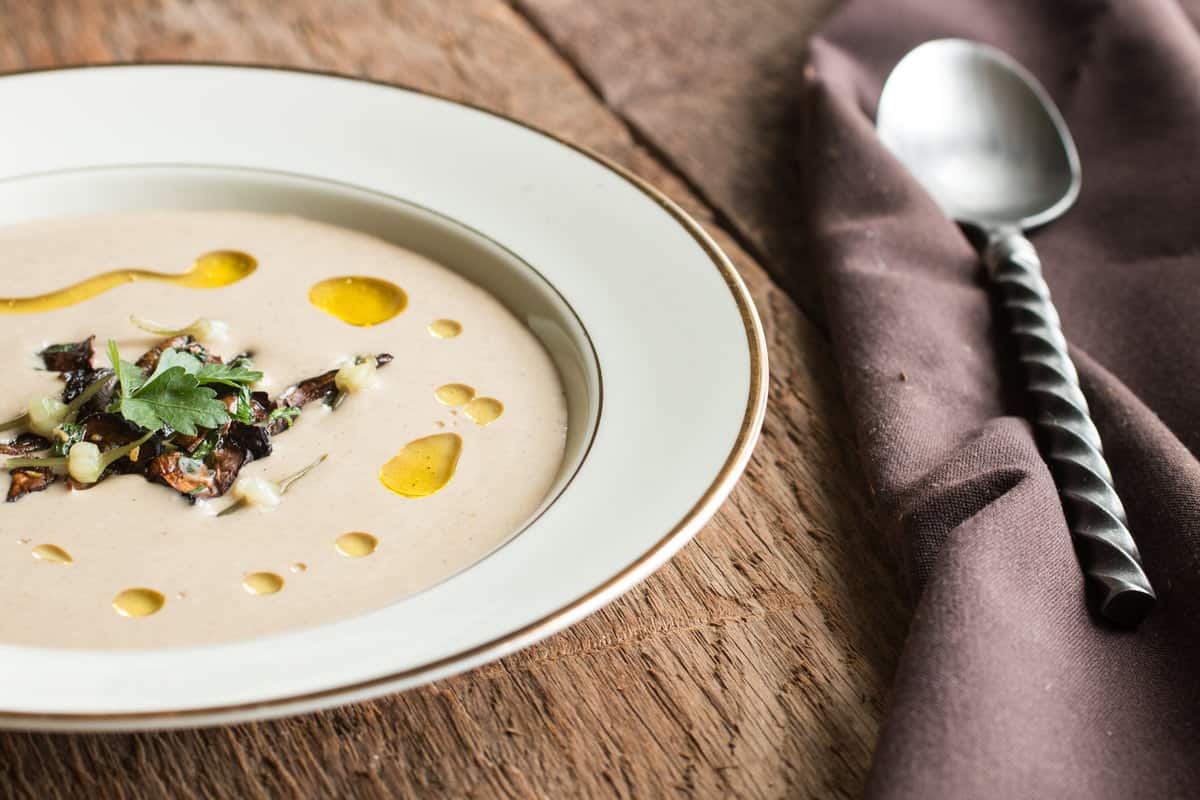
Water to Wild Rice Ratio
- Natural wild rice: use 1:2 rice to water ~ 20-25 minutes
- Blackened wild rice use 1:4 rice to water ~ 45-60 minutes
Generally speaking, a ratio of 1 parts wild rice to 2 parts water will be just fine for cooking your hand-harvested wild rice, lake rice, etc.
Black paddy rice is very different, generally using a ratio of 1:4, and that translates to a different texture and taste, but even more importantly, (and something I've never heard any other author speak of) post-cooking weight.
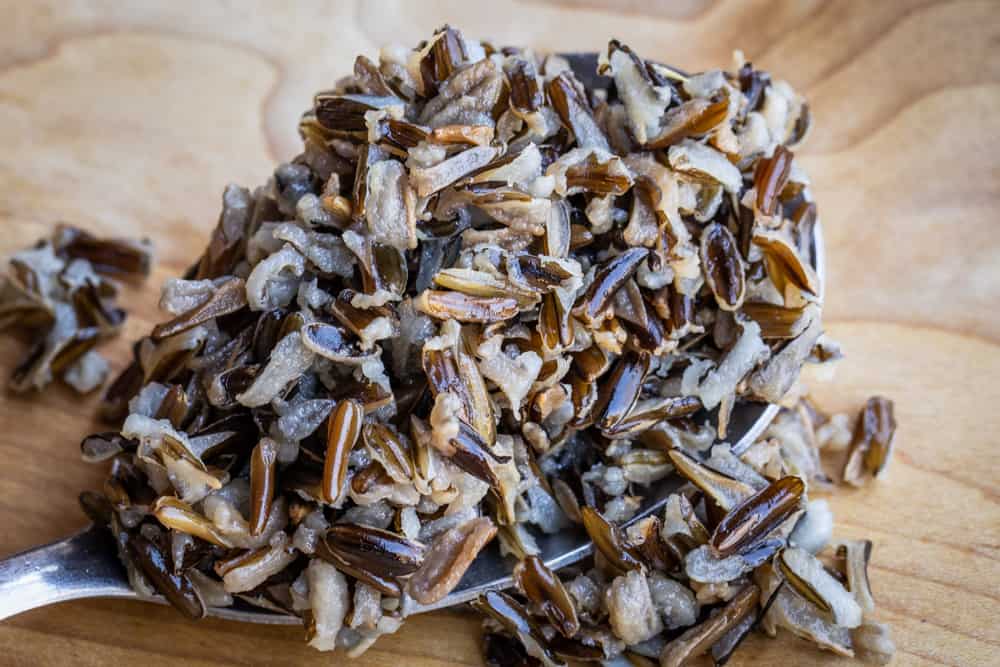
Water Weight
In my mind, this is the reason (or at least one) we often see wild rice blends marketed instead of a similar product like a seasoned kit a la Uncle Bens or Rice-a-Roni made from purely wild rice.
After cooking, black paddy wild rice is heavy, and eating a whole bowl of it just doesn't appeal to many people, myself included. I usually cut with something to lighten it up.
Natural wild rice is a different world. The real deal cooks up light as a feather with a delicate flavor, making it delicious for literally any meal of the day. Real wild rice simply cooked and slathered with melted butter and drizzled with maple syrup is a breakfast of the gods.
Part of why the real McCoy is so good is the quick-drying and parching process that gives it the lighter flavor and shorter cooking time, but also, you're not eating water weight, so it's literally lighter to eat.

Wild Rice Recipes
Here's a few of my favorites
- Turkey Wild Rice Soup with Black Trumpets
- Grouse Wild Rice with Wild Mushrooms
- Wild Rice Polenta
- Wild Rice Flour Pasta Dough
- Wild Rice Crackers
- Chicken of the Woods Wild Rice Casserole
More Wild Rice Recipes


diala
Hello I have read that wild rice can be heavily contaminated with heavy metals. Do you have a source that tests its rice? That is organic, fertilizer free and not contaminated with heavy metals? would really appreciate the help
Alan Bergo
Sorry I don't off hand. I would assume that could be an issue with people foraging their own wild rice in places affected by runoff.
GCWR
Look into Gibbs California Wild Rice. I am a quality technician here and can confidently say that our Organic Wild Rice is 100% Organic, fertilizer free, Kosher, and naturally non-GMO and gluten free, and not contaminated with heavy metals. All the Wild Rice we process passes through metal detectors! Also, any Wild Rice labeled Organic from our suppliers is tested for many different chemicals and each supplier has their own Organic certification. Furthermore, we are CCOF processing and handling certified and follow BRCGS guidelines!
Alan Bergo
Thanks for commenting as this is a good real life example of how even wild rice sellers don't even know the difference between the two versions of wild rice I'm describing. I looked into Gibbs, your company sells commodity black paddy rice, which, if you read this article you would know I'm trying to help people avoid as it's inferior to traditionally processed parched rice/manoomin. I will support Uncle Bens before I promote a company that sells only commodity black paddy rice.
Dave S
Wild rice from the White Earth Reservation is in my opinion the best hand harvested wood parched wild rice you can find.
Bert
You are correct. 😊
Alan Bergo
Thanks for chiming in Bert
Amy
Hey Alan!
My partner and I are making our first trip to Minneapolis from Iowa in early August. I'm really excited to pick up some wild rice, and willing to travel a few hours during our week long stay to get some! Forager's Harvest is Sam Thayer's seasonally foraged wild rice - is that right? Sounds like we may be just a few weeks early, but wanted to confirm.
Otherwise, I also wanted to ask if wild rice has a suggested shelf life. I'm hoping to pick up a substantial amount, but I don't want to overdo it. Thanks so much! Looking forward to finally trying some of the good stuff.
Alan Bergo
Hey Amy. It’s definitely too early for Sam’s rice and his sells out lightning fast. You have options here. You could look up my friend Matt Mosher on FB who harvests his own, but it may be hard to get truly wild stuff. If you go up to the north shore or even moose lake, most of the gas stations sell the good stuff pretty cheap, but it’s cultivated. You can also order the same rice online. You might also ask my friend Tim Clemmons if Ironwood foraging. Here if you have more questions.
Kristin
Thanks for demystifying the wild rice options. One more request for this recipe: "Wild Rice with black walnuts and creeping charlie." It sounds amazing! I'd love to know how to use creeping charlie.
John
I'm in Thief River Falls for the winter. Are there any places I can go to in person (within 100 miles) and get a high grade wild rice?
Alan Bergo
Hey John welcome to town. You'll want to call gas stations and gift shops in the area and ask if they sell parched wild rice. Make sure to read this article so you understand the differences as even people who sell the rice may not understand the differences.
Erika F.
Great article, wish I had found it earlier - but hopefully I still made a good purchase. Our monthly tribal newsletter (Anishinabe, Adawe, Ottawa of Oklahoma) included a recipe for tradition berry rice featuring minomin (our spelling is different, but phonetically very similar to Chippewa/Ojibwe), dried cranberries and real maple syrup. I want to use as traditional ingredients as possible - it was a challenge to find the "right" rice, and to know which "words" to look for in descriptions. I found Spirit Lake Native Farms in Minnesota who sell lake harvested, wood fire parched wild rice. It is owned by a member of the Fond Du lac Band of Lake Superior Chippewa. Have you any experience with this producer? They also sell wood fired maple syrup. I just received the items in the mail today and cannot wait to try the recipe. I will be sure to pass along your article! Miigwech!
Alan Bergo
Thanks Erika. I haven't seen that spelling before! If it says "wood fire parched wild rice" you have the good stuff.
Jack K
Great article. Thank you.
Any sources you can mention from Michigan?
Alan Bergo
Not currently, but my friend Clay Bowers might now. You can send him a message on Instagram or on his website.
Cait
Yes. Check out Native Harvest it's hand harvested and wood parched. And best of all its from the Ojibwe and its a privilege to get this rice from them
Alan Bergo
Thanks Cait
Sam
Hi, Alan! Great article. Looking forward to trying your recipes. I have purchased Hand Harvested Wood Parched Wild Rice from a couple I've met on one of my mushroom hunts here in MN, they harvest their own. First time purchase, and I didn't have an idea what type of questions to ask when I bought the rice. I have learned so much from reading your article, now I know what to look for when buying wild rice. Thank you!
Note: The link you posted for the Forager Harvest site is broken. When click on I received
404 Error - Page Not Found
Alan Bergo
Thanks Sam. I'll remove that link, every year we lose and gain a few suppliers. Foragers harvest will be back up eventually once they build a new facility.
Jenny
The most comprehensive article on wild rice I've ever read. I'm from Minnesota and I cannot believe I didn't know the differences until now. Thanks Alan.
Emily
I came across your post discussing wild rice and the cultivated and other varieties. I was gifted a bag of wild rice and told it was for use in breads. I make a lot of bread and many of the recipes that I have consulted speak to cooking the wild rice first. You stated in your post that soup/bread wild rice (I am assuming this might be a soup rice as it is very broken) can get mushy when cooked. How do I incorporate wild rice into bread? Does it need to be cooked first, what suggestions or advice would you have?
Alan Bergo
Yes the rice needs to be cooked first, no matter what variety of wild rice you use. Wild rice can also be used as a flour, but make sure not to include more than 30% of the total volume of flour, and I typically hydrate it beforehand using the soaker method. I have a recipe for wild rice flour sourdough in my book.
JoAnne Lee
I’m looking for the wild rice that looks like a “c” when it is cooked. Tender - not crunchy like the stuff you find in stores. Is that what the Moose Lake Hand Picked Wood Parched Lake & River Wild Rice is? Sorry to be so specific but I have purchased wild rice online that was supposed to be what I described only to find it is the same stuff I can buy at Walmart. I don’t mind spending $25 for the rice and shipping as long as it is the amazing rice I am looking for. Thanks for any help you can offer!
Alan Bergo
Yes you want manoomin. In the kitchen we used to call it "curly worm rice" because it curls up like that.
Jennifer W
Curious if the “Moose Lake Hand Picked Wood Parched Lake & River Wild Rice” truly cooked up like a “c”. I am looking for the exact same thing.
Alan Bergo
If it's labeled as such it will.
Jennifer W
Thank you for responding. I cannot seem to find any wild rice that states it curls. Could you give me a search term or a recommendation? Also, I would love to see this recipe "Wild Rice with black walnuts and creeping charlie". I did not see it and apologize if it is here somewhere.
Great article BTW
Alan Bergo
You bet. So, wild rice that curls into a c after cooking or "curly worm stage" as we used to call it in the kitchen is not a recognized attribute of wild rice you'll see described anywhere or with any brand to my knowledge. ANY of the wood parched varieties I've listed here will cook like you want them to. The only ones that won't are black paddy rice varieties.
Bunny Lebowski
Fantastic article, super informative. I'm looking forward to receiving and cooking my Moose Lake wild rice (ordered the maple syrup too for good measure). Much appreciated for the insight on how/what to buy, as well as cooking tips. I was woefully under-informed.
Alan Bergo
Thanks Bunny. Glad it was helpful.
Kim
Alan, you are not kidding this is confusing. Are you familiar with Moose Lake brand Wild Rice? mooselakewildrice.com What do you think? I checked out your recommendation of Great Lakes Wild Rice - all they are offering is "cultivated", though wood parched. Also wanted to let you know about a nutcracker I use for hickory nuts - a 1901 CE Potter nutcracker. It handles black walnut as well, though butternuts are usually too long for it to fit into the chamber, if that's what you'd call it.....I got mine on ebay for about 100. There are a dozen listed right now. Thank you or bringing up the AI topic. I recently visited Amazon to look for a canning/preserving book I don't have, and my impression of the search results was "what is all this junk?". Now I get it, and I am appalled! Love your book, your posts and your perseverance to extract a flavor and would like to know where to get an awesome foragerchef sweatshirt. A few years back, I had the privilege to forage for 3 noma alumni - all at the same restaurant here in CT. It was about the same time I discovered you - you were an inspiration then, and continue to be. Keep up the great work!
Alan Bergo
Hi Kim, yes, the best stuff for the money you're going to find will be cultivated, wood parched wild rice or manoomin. It will be very difficult to find truly wild, hand harvested wild rice unless you have a friend who does it, or you do it yourself. Cultivated wood and even gas parched are just fine, and are what I prefer to buy. It's the best combination of price to quality I've found.
Sue
I've been very pleased with Red Lake Nation wild rice (now part of Nawapo).
Alan Bergo
There's a reason I don't recommend that brand. Their "quick cook" or traditional finish is not the same as other high quality rices I share here. They use scarification, which basically means you have black paddy rice with some holes punched in it to help it absorb water faster. The lower quality of this is reflected in the price. If, at some point they begin selling natural/parched/manoomin, I'll add them as a supplier.
Nunya Biz
Red Lake owns KCs Best since 2021
Lisa Johnson
Interesting article, another source for Dry Roasted Wild Rice with a nice nutty flavor is Chieftain Wild Rice. Their rice has a nice yield of 4 cups per 1 cup cooked and it tastes delicious. They also offer rice for home consumers under their Rice River Farms banner.
Alan Bergo
Thanks for sharing Lisa.